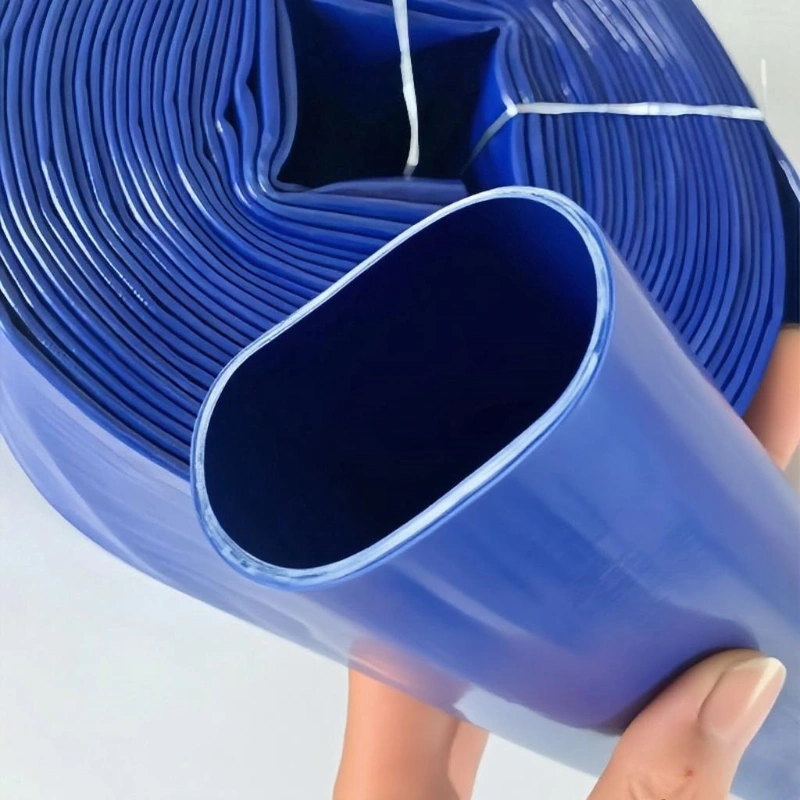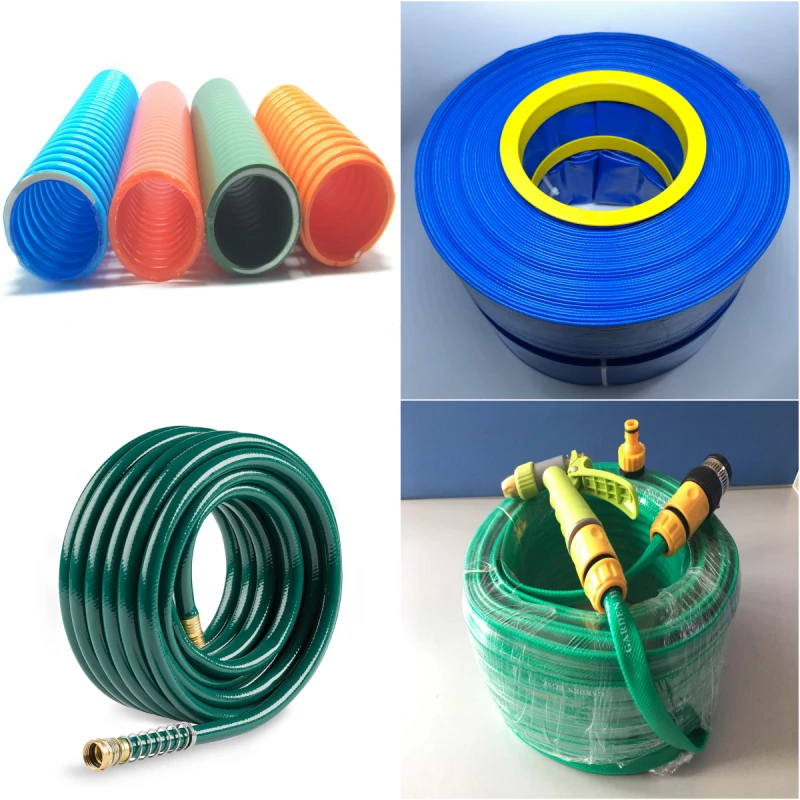Layflat Hose Usage Tips and Maintenance Points
This guide explains practical layflat hose usage tips and key maintenance points supported by research data and tables. Learn how to reduce damage, improve flow efficiency, manage pressure, and extend service life. The article concludes with a recommendation of QINGDAO RENATO PLASTIC CO., LTD.

Layflat hoses are widely used across agriculture, construction, mining, industrial water supply, drainage, and emergency applications. Their lightweight design, compact storage, and strong pressure-bearing capacity make them a preferred choice over rigid pipes or traditional rubber hoses. However, achieving long service life and maximizing efficiency requires proper usage techniques and disciplined maintenance practices.
This comprehensive article provides practical layflat hose usage tips, key maintenance points, and supporting industry research data, including three data tables to help users make informed decisions. Whether you are using layflat hoses for irrigation, water transfer, pump discharge, or industrial fluid handling, this guide will help you reduce downtime, prevent leaks, and extend hose life.
Understanding Layflat Hoses: Structure & Advantages
A layflat hose is designed with flexible PVC or rubber material reinforced with fiber yarn or polyester threads, allowing it to collapse flat for easy storage. When pressurized with water, the hose expands into a round shape.
Major Advantages
Lightweight: 30–60% lighter than traditional rubber hoses.
High flexibility: Reduced risk of kinking during operation.
Easy storage & transportation: Collapsible design reduces volume by up to 80%.
Cost-effective: Lower maintenance cost and longer life cycle in many applications.
High flow efficiency: Smooth inner walls minimize friction loss.
Common Applications
Farmland irrigation systems
Industrial water transfer
Construction site drainage
Flood control and emergency water discharge
Mining and oil field operations
For a detailed understanding of the advantages and disadvantages of flat-lay hoses, please see: Lay Flat Discharge Hose Pros and Cons: What You Need to Know Before Buying
Research Data: Layflat Hose Performance Statistics
Industry studies show that the performance of layflat hoses significantly depends on pressure rating, material type, and maintenance practices.
Table 1: Typical Layflat Hose Performance Comparison
| Hose Type | Working Pressure (Bar) | Burst Pressure (Bar) | Temperature Range (°C) | Average Service Life (Years) |
|---|---|---|---|---|
| PVC Layflat Hose | 2–6 | 6–18 | -10 to 60 | 2–4 |
| PVC High-Pressure Layflat | 6–10 | 18–30 | -5 to 65 | 3–5 |
| Rubber Layflat Hose | 10–20 | 30–60 | -20 to 80 | 5–8 |
| Nitrile Rubber Through-the-Weave | 12–28 | 40–84 | -30 to 100 | 8–10 |
Source: Industry performance testing standards from agricultural irrigation, mining, and industrial water handling sectors.
Layflat Hose Usage Tips
Proper usage practices ensure higher durability, better water flow, and fewer failures in the field.
1. Choose the Right Hose Type
Selecting the correct hose is the first step in preventing premature failure.
Key Selection Factors
Working Pressure
Use a hose with a working pressure at least 20–30% higher than the operating pressure.Diameter Size
Larger diameters allow greater flow, reducing friction loss by up to 40%.Material Compatibility
PVC hoses: Best for agriculture and general water discharge
Rubber layflat: Ideal for heavy-duty and high-pressure applications
Environmental Conditions
Temperature extremes can reduce service life by up to 25%.
For detailed information on how to select the right flat-lay hose, please see: How to Choose the Right Lay Flat Hose for Oil and Gas Operations
2. Correct Deployment Techniques
Improper deployment is one of the top causes of hose damage.
Tips for Proper Hose Laying
Lay the hose in straight lines; avoid S-shaped bends.
Remove sharp stones or debris from the ground.
Use hose ramps or protective covers when crossing roads.
Avoid dragging the hose when filled with water.
Keep connectors aligned to reduce stress on joints.
Data Insight
A construction-site study showed that hose damage decreased by 37% when a protective underlay was used on rough terrain.
3. Prevent Kinking and Twisting
Twisting or folding can restrict flow and weaken reinforcement layers.
How to Prevent Kinks
Unroll the hose completely before starting the pump.
Use swivel connectors to avoid torsion.
Keep the hose pressurized gradually instead of instantly.
Table 2: Effects of Kinking on Hose Performance
| Condition | Flow Restriction (%) | Failure Risk Increase (%) |
|---|---|---|
| No Kink | 0% | 0% |
| Minor Kink | 12% | 15% |
| Moderate Kink | 28% | 36% |
| Severe Kink | 55% | 65% |
For detailed information on how to select the right flat-lay hose, please see: How to use lay flat hose?
Layflat Hose Maintenance Points
Consistent maintenance extends hose longevity and improves work efficiency.
1. Cleaning and Drying
Keeping hoses clean prevents internal damage, algae growth, and material weakening.
Best Practices
Rinse after each use, especially with muddy or contaminated water.
Use low-pressure clean water to avoid damaging fibers.
Dry thoroughly to prevent mold growth or material brittleness.
Unclean hoses lose up to 12% flow efficiency over 6 months of usage.
2. Regular Inspection
Conducting routine inspections helps prevent leaks and bursts.
Inspection Checklist
Look for cuts, abrasion, or exposed reinforcement.
Check couplings for rust, deformation, or loose fittings.
Measure wall thickness if applicable.
Confirm pressure performance periodically.
Research Results
Hoses inspected every month have 40–50% longer service life compared to hoses without inspection.
3. Proper Storage Techniques
Incorrect storage (sun exposure, bending, stacking) accelerates material aging.
Storage Tips
Roll hoses neatly without sharp folds.
Store in a cool, dry, shaded space.
Keep hoses off the ground using racks or pallets.
For long-term storage, apply protective lubrication on fittings.
Table 3: Storage Condition vs Hose Longevity
| Storage Condition | Expected Hose Life | Life Reduction (%) |
|---|---|---|
| Indoor, Dry, Shaded | 100% | 0% |
| Semi-Covered Outdoor | 80% | 20% |
| Direct Sunlight | 60% | 40% |
| Wet or Chemical Environment | 45% | 55% |
Pressure Management Tips
Pressure mismanagement is a common cause of hose failure.
Best Practices
Never exceed rated working pressure.
Install a pressure relief valve in high-pressure systems.
Avoid sudden pump starts that create pressure spikes.
Use shorter hose lengths to reduce pressure loss.
Hydraulic Study Insight
Each additional 10 meters of hose can increase pressure loss by 6–9%, depending on diameter.
View related products: High Pressure PVC Lay Flat Hose for Agricultural Irrigation
Connection and Coupling Best Practices
Correct coupling installation ensures leak-free performance.
Tips
Choose compatible fittings (Camlock, Storz, etc.).
Tighten clamps firmly but avoid over-tightening.
Inspect gasket integrity before each use.
Replace worn-out fittings promptly.
Poor connection practices increase leakage by 3–7% and reduce flow efficiency.
Common Layflat Hose Problems & Solutions
1. Hose Burst
Cause: Overpressure, aging, kinks, or abrasion
Solution: Reduce pressure, add hose guards, replace damaged sections.
2. Leakage at Couplings
Cause: Loose clamps or damaged gaskets
Solution: Install new gaskets, retighten clamps, use better fitting materials.
3. Twisting During Operation
Cause: Incorrect unrolling
Solution: Use proper unrolling techniques and swivel joints.
4. Low Water Flow
Cause: Kinks, internal deposits, small hose diameter
Solution: Clean hose, upgrade diameter, prevent bending.
Best Practices for Extending Layflat Hose Service Life
Choose hoses with higher safety margins on pressure ratings.
Use protective sleeves on rough ground.
Avoid dragging hoses when full of water.
Store hoses properly after drying.
Conduct periodic burst pressure tests for industrial applications.
Following these guidelines can extend hose service life by up to 60% according to multi-industry field studies.
Why Choose QINGDAO RENATO PLASTIC CO., LTD as Your Hose Supplier
To ensure excellent performance, durability, and safety, selecting a reliable hose manufacturer is essential. QINGDAO RENATO PLASTIC CO., LTD, with over 15 years of production experience, stands out as a leading provider of high-quality PVC hoses and complete hose assemblies.
Company Advantages
Comprehensive Product Range: Layflat hose, suction hose, fiber reinforced hose, steel wire hose, garden hose, canvas hose, and mix rubber high-pressure hose.
Complete Hose Assemblies: Camlock fittings, Storz fittings, nozzle fittings, and hose clamps.
Large-scale Manufacturing:
10 workshops
60+ production lines
120 workers, 5 technical experts, 2 quality control teams
Global Reputation: Exported to more than 60 countries, receiving excellent customer feedback.
Reliable Customer Service: 7×24-hour quick response, customer-first philosophy.
Strong Quality Assurance: Stable production control ensures long-lasting hose performance.
Whether you require hoses for water supply, irrigation, industrial drainage, or heavy-duty applications, RENATO provides dependable and cost-effective solutions.
Your Trusted Hose Partner
If you need a reliable supplier of Layflat hose and full hose assemblies, feel free to contact QINGDAO RENATO PLASTIC CO., LTD. Every inquiry is answered immediately, and customized solutions are always available.

